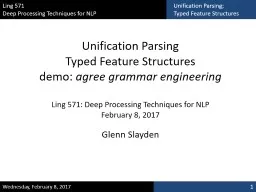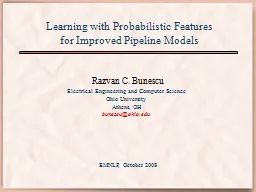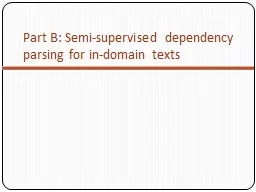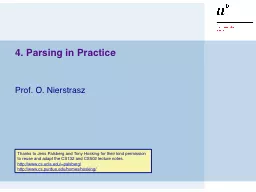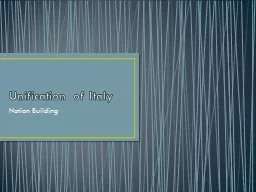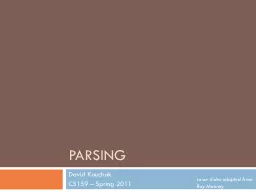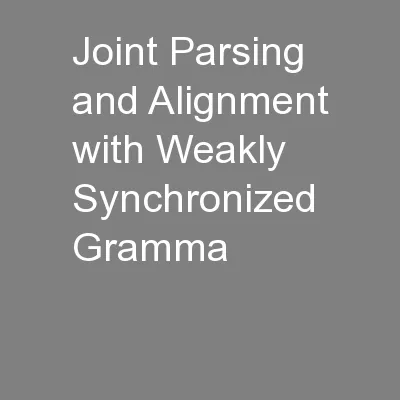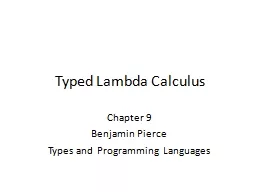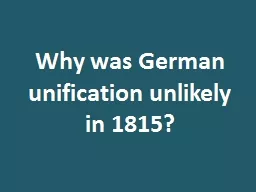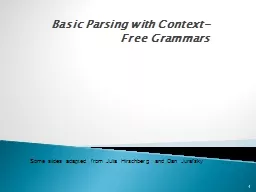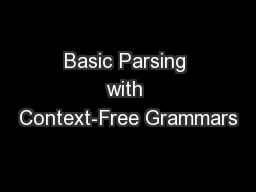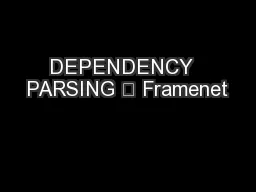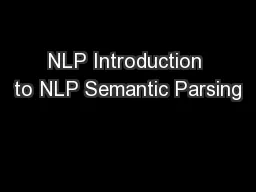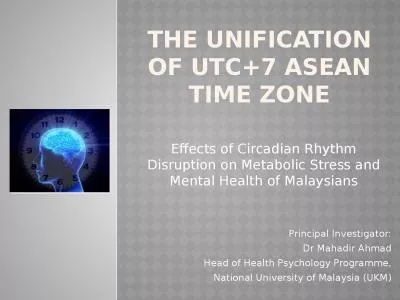PPT-Unification Parsing Typed Feature Structures
Author : briana-ranney | Published Date : 2018-02-27
demo agree grammar engineering Ling 571 Deep Processing Techniques for NLP February 8 2017 Glenn Slayden Parsing in the abstract Rulebased parsers can be defined
Presentation Embed Code
Download Presentation
Download Presentation The PPT/PDF document "Unification Parsing Typed Feature Struct..." is the property of its rightful owner. Permission is granted to download and print the materials on this website for personal, non-commercial use only, and to display it on your personal computer provided you do not modify the materials and that you retain all copyright notices contained in the materials. By downloading content from our website, you accept the terms of this agreement.
Unification Parsing Typed Feature Structures: Transcript
Download Rules Of Document
"Unification Parsing Typed Feature Structures"The content belongs to its owner. You may download and print it for personal use, without modification, and keep all copyright notices. By downloading, you agree to these terms.
Related Documents

